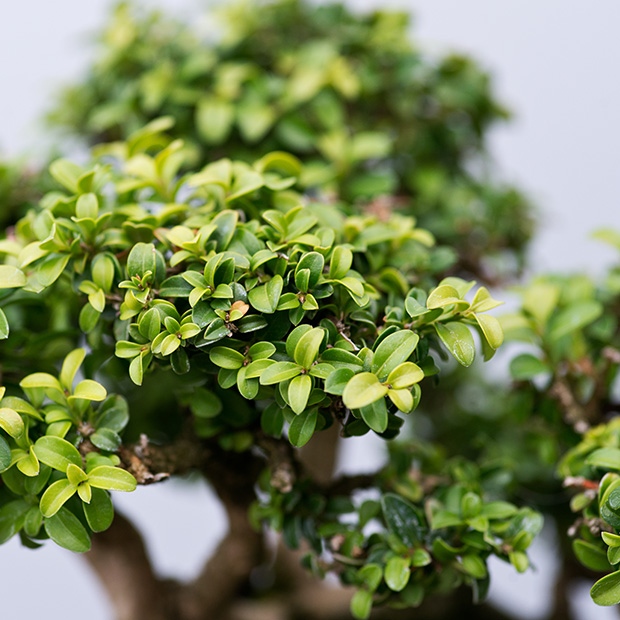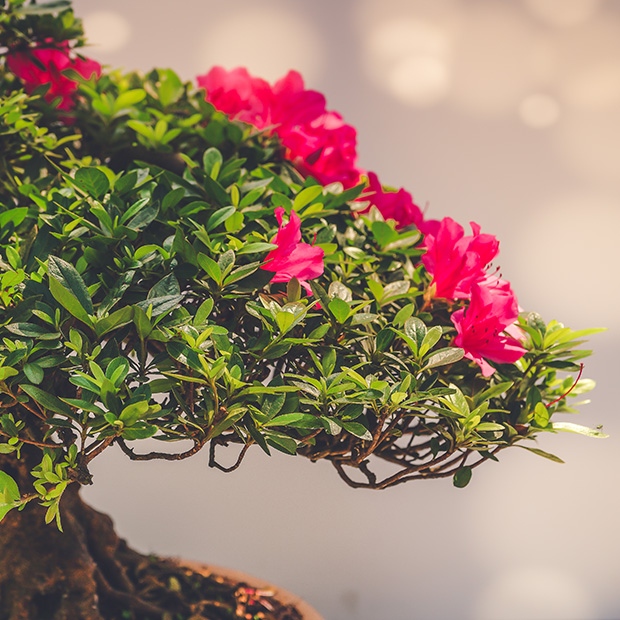Bonsai: How horticultural, technical and artistic expertise delivers excellence
Every tree starts with a seed or a cutting. And a bonsai, while timeless and breath-taking, is just the same.
Article | 3 min read | August 2019
Every tree starts with a seed or a cutting. And a bonsai, while timeless and breath-taking, is just the same. Where it differs is the amount of daily dedication, care and attention that is required to create one of these minute masterpieces.
In Japan, the home of the bonsai, to become a master – an honorific rather than a qualification – takes a lifetime. Bonsai apprenticeships are famously hard to come by and gruelling; few last the required five years to be certified by the Nippon Bonsai Association.
The challenge of bonsai is the breadth of skills it requires. Bonsai is not just about horticulture, science or art: it is a unique combination of all three.
By understanding the horticultural needs of the plant, it is possible to cultivate a healthy specimen and satisfy its requirements for nutrients, light, heat, oxygen and water. But addressing these needs alone, which vary significantly between season, species and even individual trees, will never create the centuries old pine sold for a record $1.3 million in Takamatsu, Japan in 2011.
Similarly, the technical and scientific aspects of bonsai tending are complex but in isolation are insufficient for success. These miniature marvels must be wired to direct their growth, and both branches and roots regularly and delicately pruned to control development. It is constant pruning and the restrictions of pot growing that maintain the canopy’s tight structure. But container growing means that watering and feeding must be exact. And too much pruning can easily kill a branch, destroying a silhouette that might have been decades in the making.
The aesthetics of bonsai are what makes them so appealing. Their flawless proportions – but on a tiny scale – appeal to many people’s sense of perfection. This sense of petite exquisiteness is as difficult to achieve as the lustre of light in an old master painting; such simplicity – natural looking but entirely contrived – is immensely complicated.
No artist, however great, could hope to sculpt a bonsai without also understanding its horticultural and scientific facets.
An individual with a horticultural, technical and artistic ability, willing to dedicate the necessary time and energy to learn the art of bonsai, is rare. What’s more, that person has to be unassuming: perhaps the ultimate accolade in bonsai is for the artist to appear to have left no visible trace on their plant. Bonsai require serenity, patience and an open mind in order to create beauty and meaning. In this sense, bonsai epitomises Japan’s Wabi-sabi philosophy, which accepts complexity and imperfection but values modesty and simplicity. While electronics company TDK has integrated a bonsai plant with artificial intelligence that allows it to move to bask in the sun or ask for water, the importance of the contemplative – and very human – qualities personified by a bonsai master mean they are unlikely to be replaced by an algorithm any time soon.
Maybe it is these extraordinary challenges that explain why, while we all now have access to bonsai shrubs and trees at our local garden centre, when we first come across a true bonsai, we cannot help but be in awe of the wisdom and skill it represents. This sense of wonderment at bonsai’s condensed magnificence also helps to explain the 20,000 devotees that attend the Kokufu Ten bonsai exhibition in Tokyo and the 145,000 people who visit the Bonsai Clubs International event in France every four years.
Bonsai masters achieve their expertise not just through their apprenticeship and long experience but also as a result of their commitment to gather and share knowledge. There have been many famous and revered tomes about bonsai written over the centuries: in 1681 they were mentioned in a horticulture book in China, where bonsai originated as a more natural and wilder ideal of miniaturised trees known as Penjing. A gathering of Japanese scholars in around 1800 near the city of Osaka helped to establish the various standards associated with bonsai, and used the term for the first time. And Yuji Yoshimura’s The Art of Bonsai, published in 1957, introduced the miniature trees and landscapes to many in the West for the first time.
Ultimately, it is the combination of precision, a lifelong practice and craftsmanship associated with bonsai that make them truly special.
While orchid growers might show a similar level of obsession with their chosen species, bonsai’s longevity and size mean that every cut, wire position or choice of pot plays an incremental but crucial part in determining the splendour of this living artwork. Bonsai are therefore a pinnacle of plantsmanship and arguably one of the greatest expressions of humans’ ingenuity, commitment to beauty, and our relentless pursuit of excellence. In short, bonsai’s small stature belies something enormous: they can be seen as the essence of humanity distilled to a pocket-sized plant.







